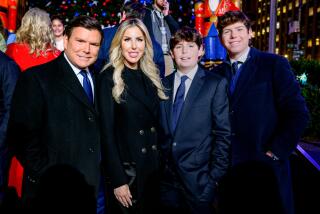Baby Fae’s Disease--Surgery ‘Encouraging’ : Doctor Says Operations Cut Infants’ Mortality
- Share via
CORONADO, Calif. — A University of Pennsylvania surgeon reported “encouraging” results Friday with operations to treat the invariably fatal heart disease that afflicted Baby Fae.
Dr. William Norwood, chief of cardiothoracic surgery at the Children’s Hospital of Philadelphia, said “as our experience has increased, the mortality has gone down.”
The surgeon said nine of the first 10 patients who received the initial operation in 1984 died, compared to just 25% of patients who were operated on in the first five months of this year.
Got Baboon’s Heart
Norwood shared the podium at an international conference of more than 500 cardiologists and cardiac surgeons with Dr. Leonard Bailey, who transplanted the heart of a baboon into Baby Fae at the Loma Linda University Medical Center last October.
Bailey, who told a medical meeting in Monterey last week that Baby Fae died because her blood type was different than the donor baboon’s, provided considerably less information about the case in his presentation Friday. He declined to talk to reporters.
Bailey’s patient, identified only as Baby Fae at her parents’ request, died 20 days after she received the animal’s heart transplant.
Bailey had said in Monterey that surgical procedures are inadequate to treat Baby Fae’s condition, called the hypoplastic left heart syndrome. This congenital malformation prevents the side of the heart that pumps blood to the body from fully developing.
Norwood said Friday that 60% of the 65 children receiving the first of the two surgeries since January, 1984, are living and 50% are “trouble-free.” One child, 20 months old, has received the second surgery and was released from the hospital “well.”
Norwood told a reporter that he had previously performed the second surgery on four children in Boston. The one survivor is 5 years old.
Dr. Aldo Castaneda, chief of cardiac surgery at Children’s Hospital in Boston, called Norwood’s results a “remarkable improvement.”
Norwood cautioned, however, that some children with the hypoplastic left heart syndrome had “unfavorable anatomy” for an operation and might be considered for heart transplants. It is a “modest experience” and we are “still learning,” he said.
Also on the program was Dr. Magdi Yacoub of Harefield Hospital in England, who performed a human-to-human heart transplant in an infant in the summer of 1984 and plans future surgeries. His patient died 26 days after the operation from multiple complications.
Yacoub said human hearts could be found for even very young infants if surgeons “tried harder”--a statement that contrasted with one from Bailey that such hearts were very difficult to find. Yacoub said, for example, that two suitable hearts had been offered to him this year, but he had no patients then needing surgery. “We could probably get more if we put out the alert.”
Bailey said he has not found “suitable” human donors in the past. He was criticized last year for not searching for a human heart for Baby Fae and has pledged to look for human donors in the future .
Between 5,000 and 6,000 infants have been born with the hypoplastic left heart syndrome since 1968 in the United States, according to Bailey. It is the fourth most common cardiac defect causing symptoms in the first year of life.
The conference is called the “International Symposium on the Aortic Root.” It is sponsored by the Scripps Clinic and Research Foundation and continues through Sunday at the Hotel Del Coronado.






